Abstract
The absorption, distribution, and excretion of trichloroethylene, as well as the kinetics of formation and elimination of trichloroethanol (TCE) and trichloroacetic acid (TCA) were simulated by a mathematical model. The results of this model have been satisfactorily compared with those obtained experimentally from pulmonary elimination of the solvent and from urinary excretion of the metabolites. The model permitted a study of the distribution of the solvent in the different tissues of the organism as well as an evaluation of the body burden of TCE and TCA. The influence of the duration and repetition of the exposure on the urinary eliminations of TCE and TCA was studied, and showed that the excretion of the first metabolite represents the most recent exposure while that of the second is related to the average exposure of the preceding days. The study of the pulmonary elimination of trichloroethylene during single or repeated exposures showed a linear relationship between the alveolar concentration of the solvent approximately 15 hours after the end of the exposure and the quantity of trichloroethylene accumulated in the fatty tissues.
Full text
PDF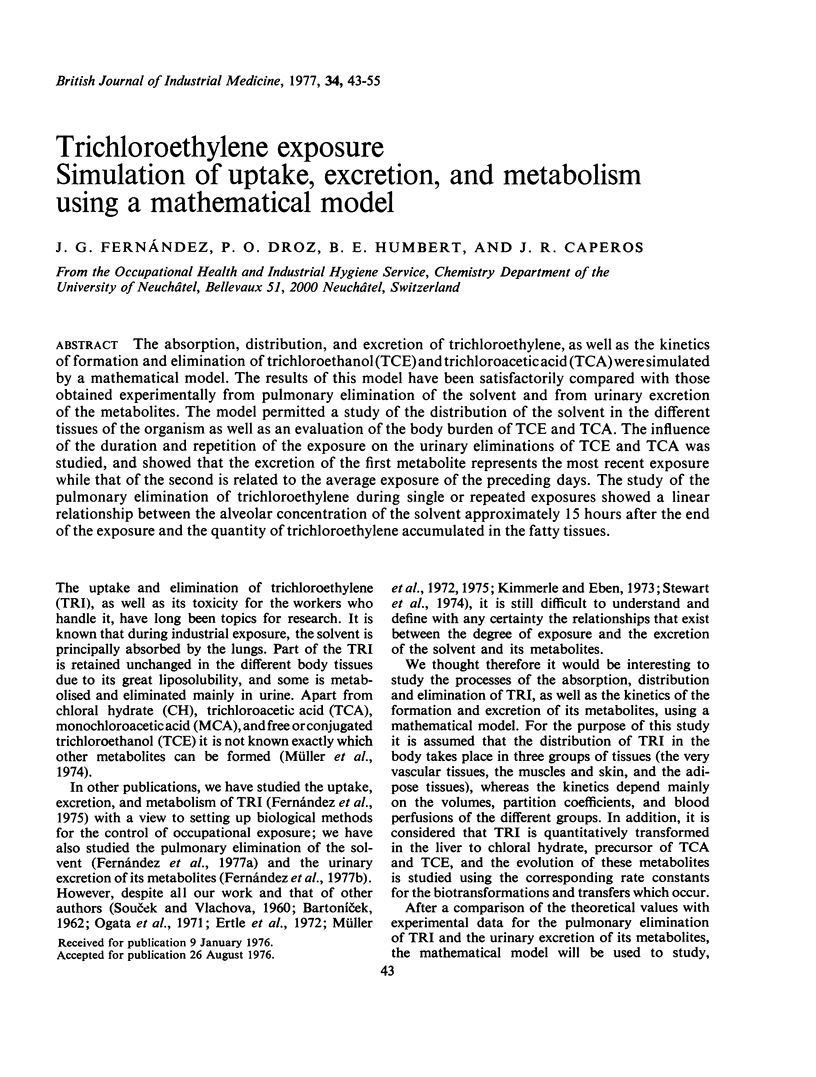

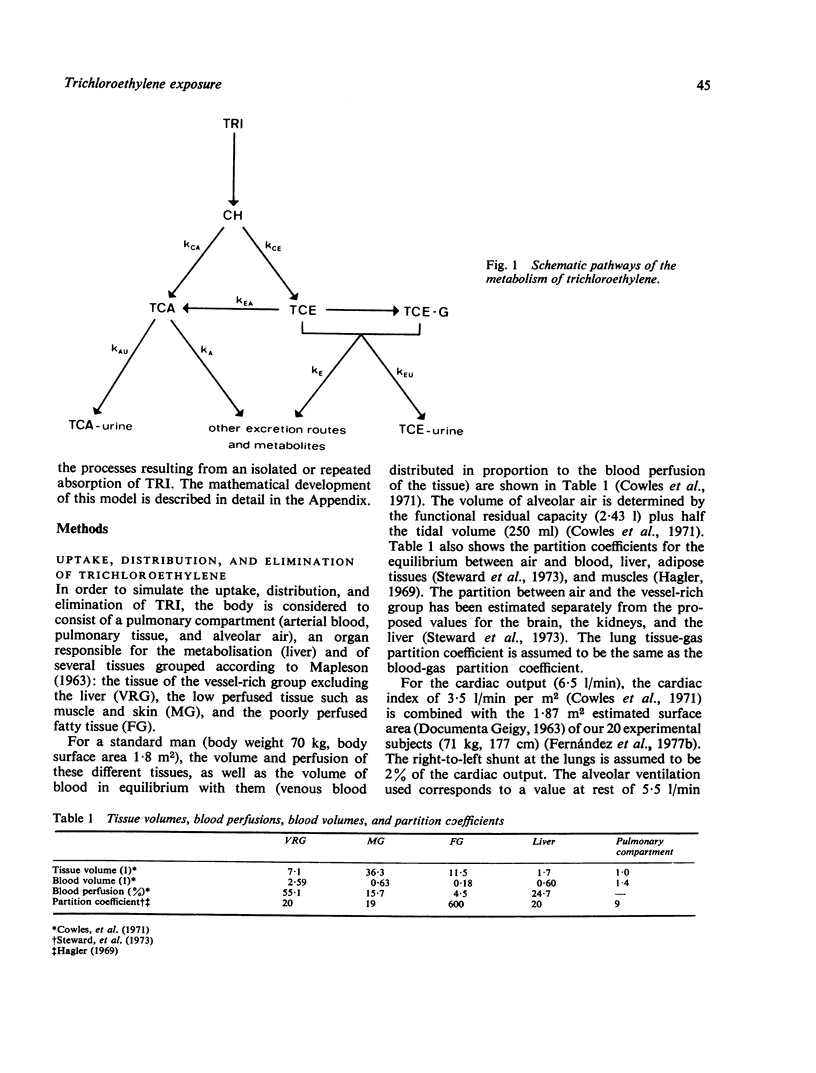
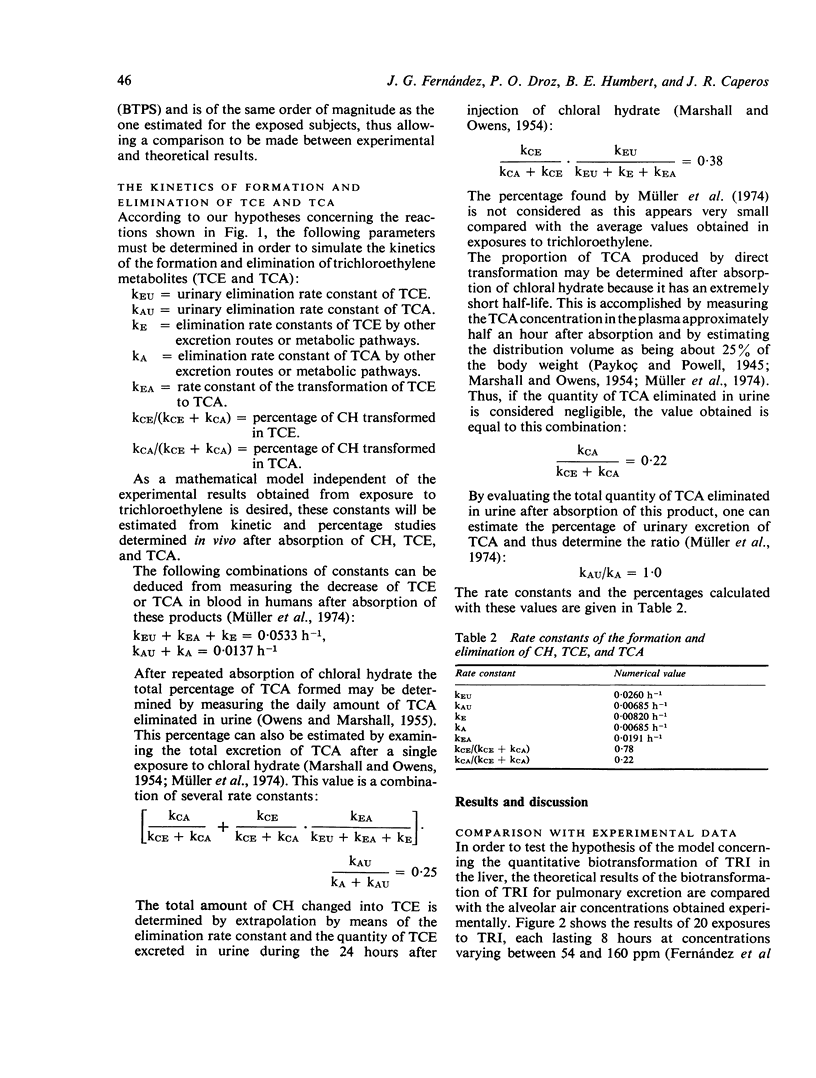
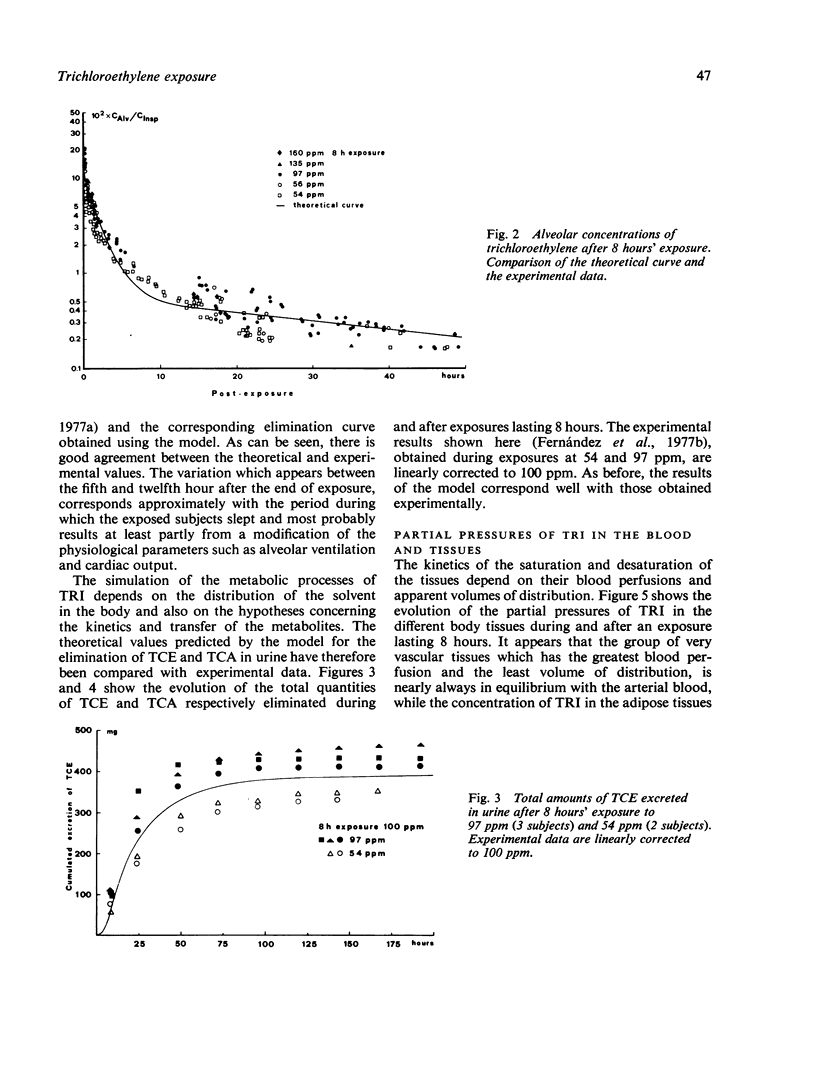
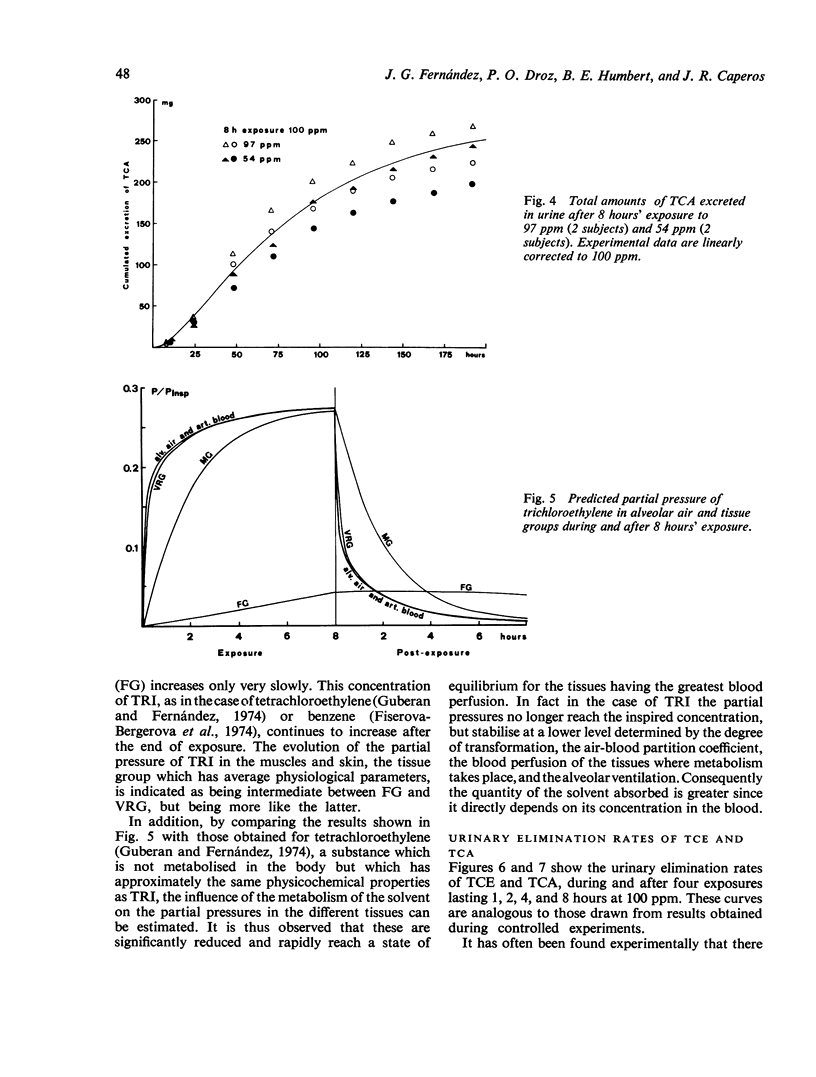

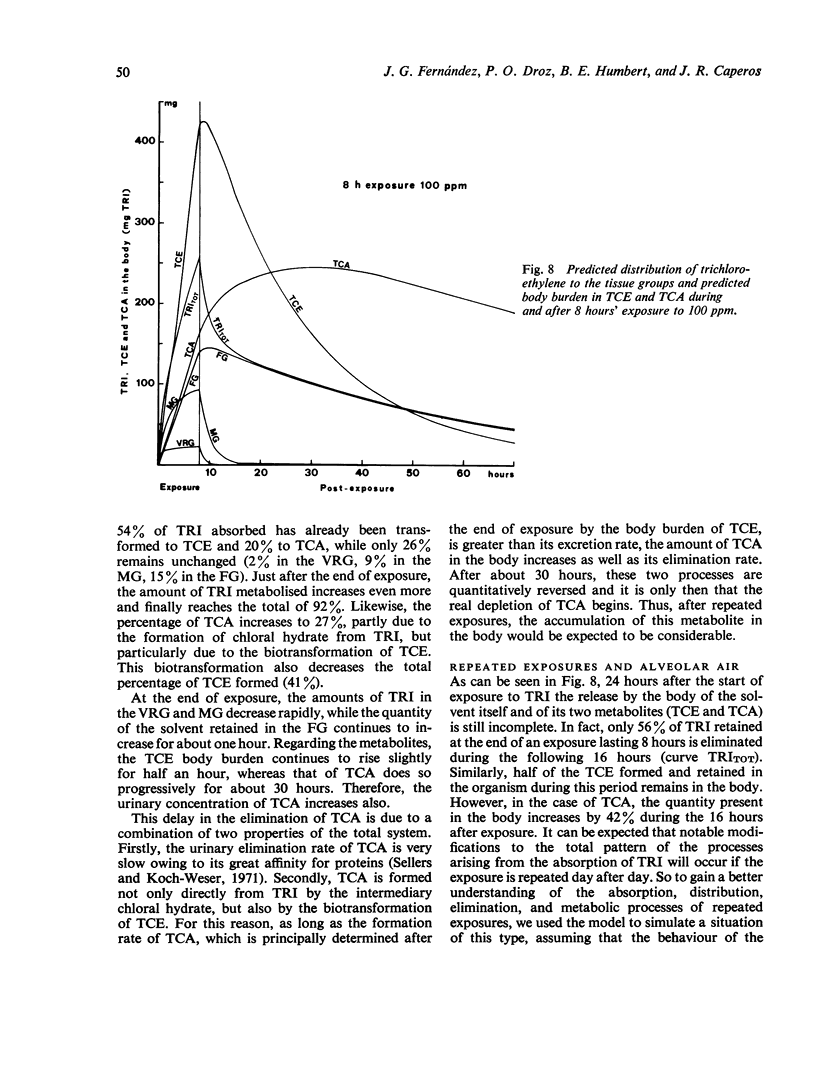
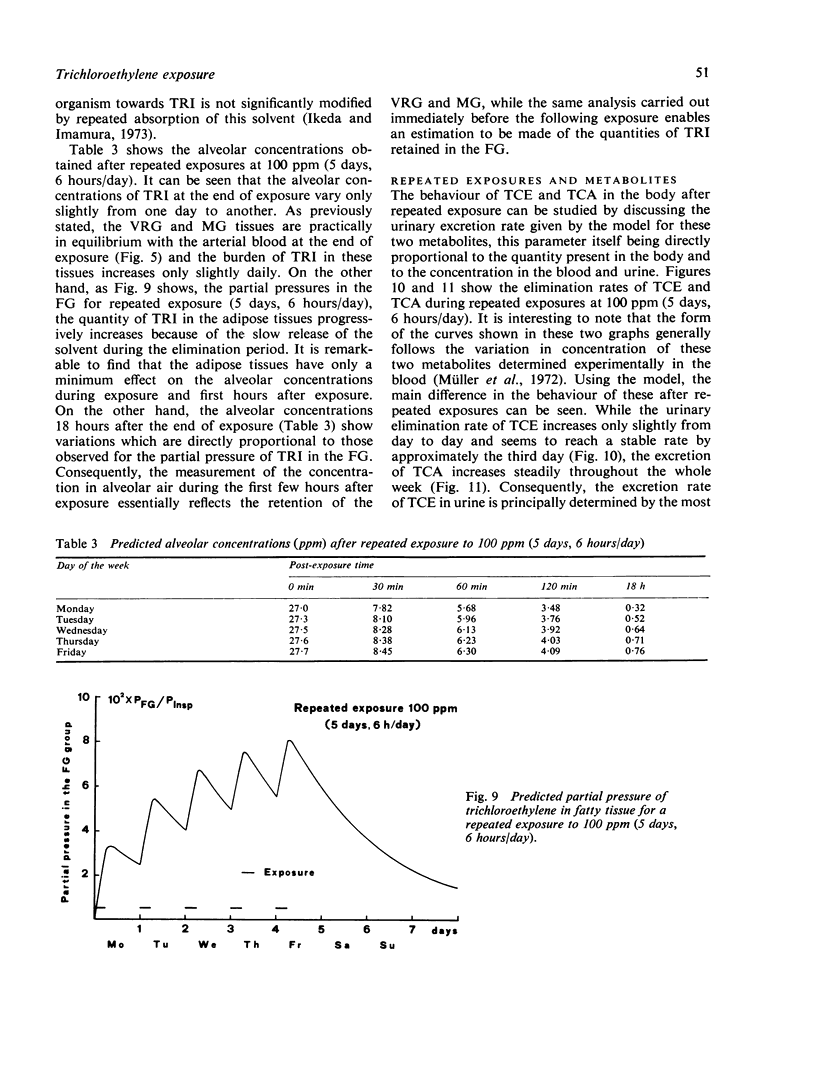
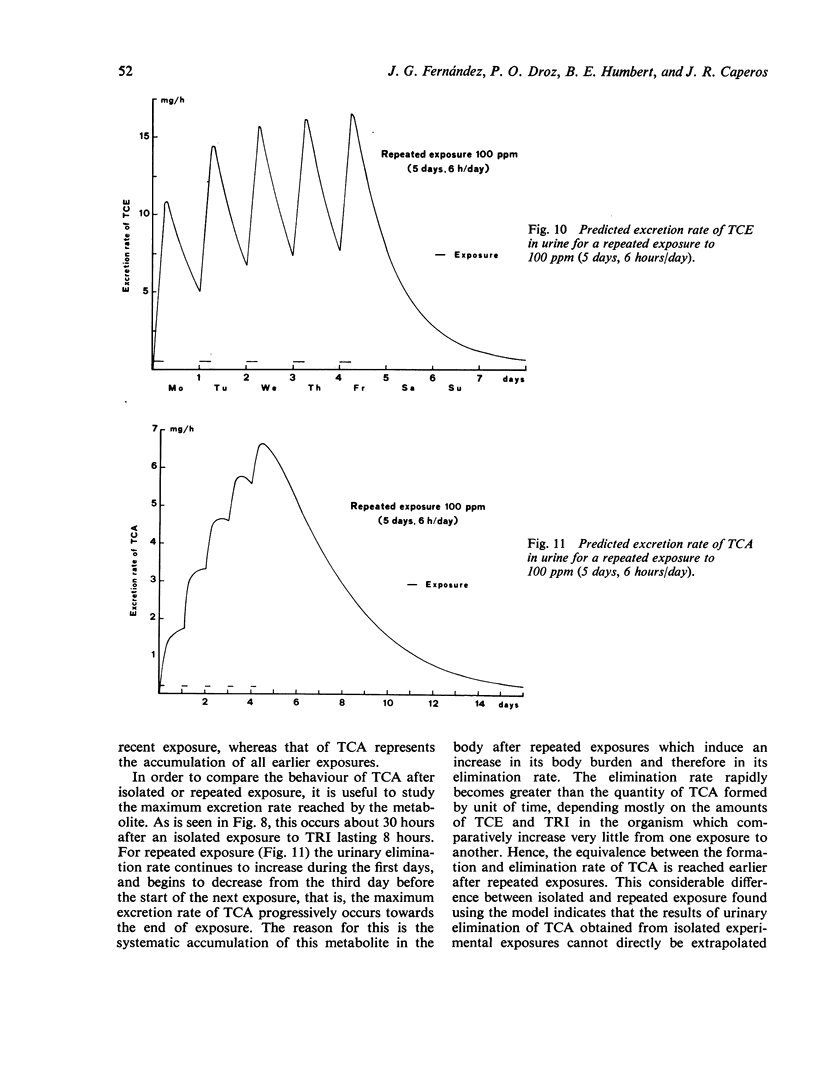
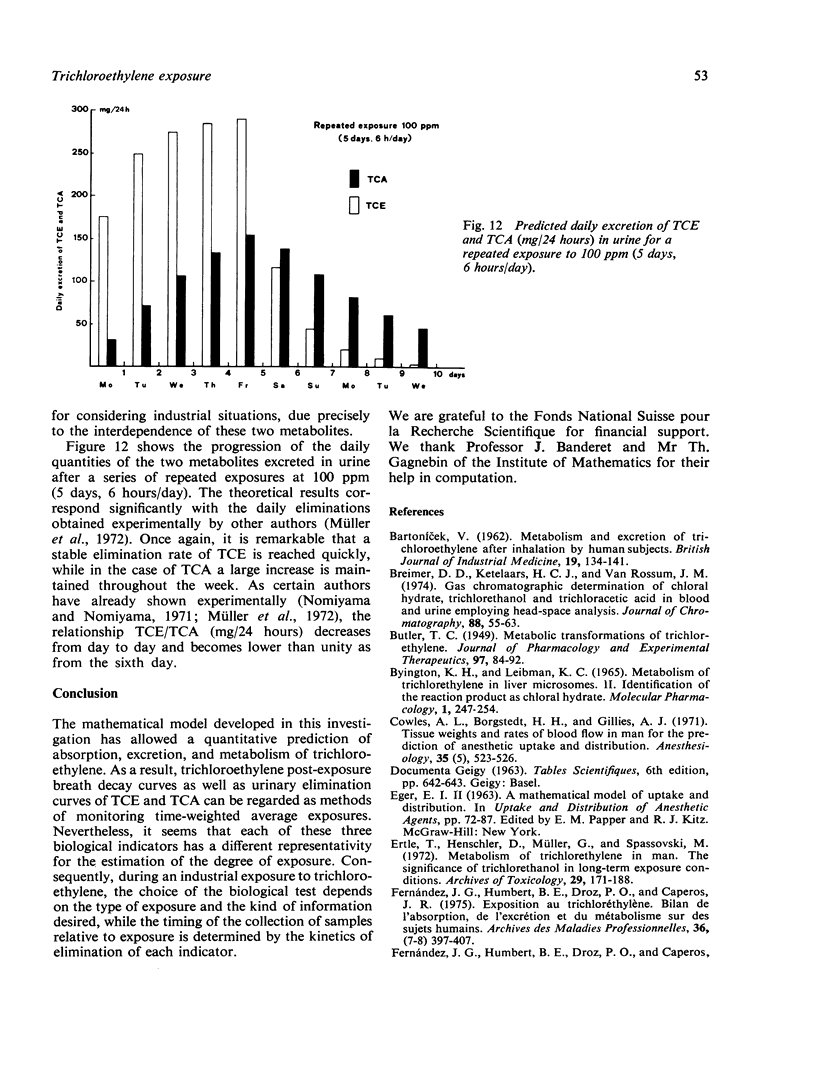
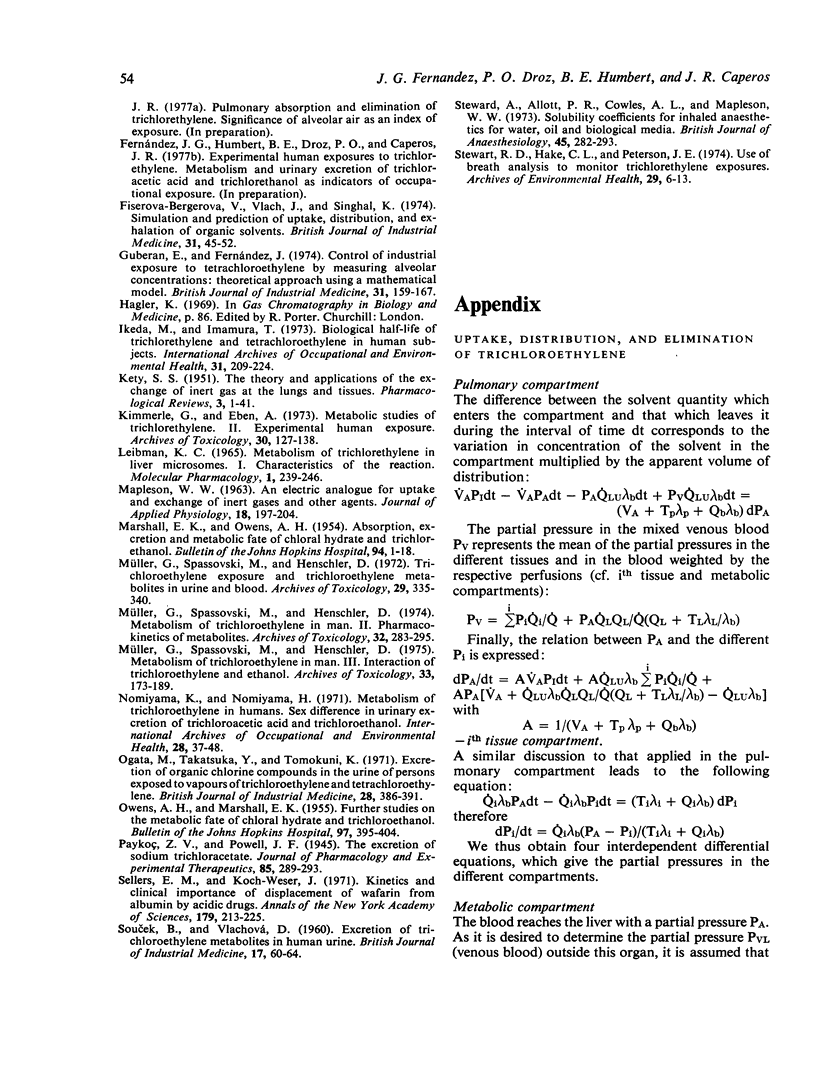
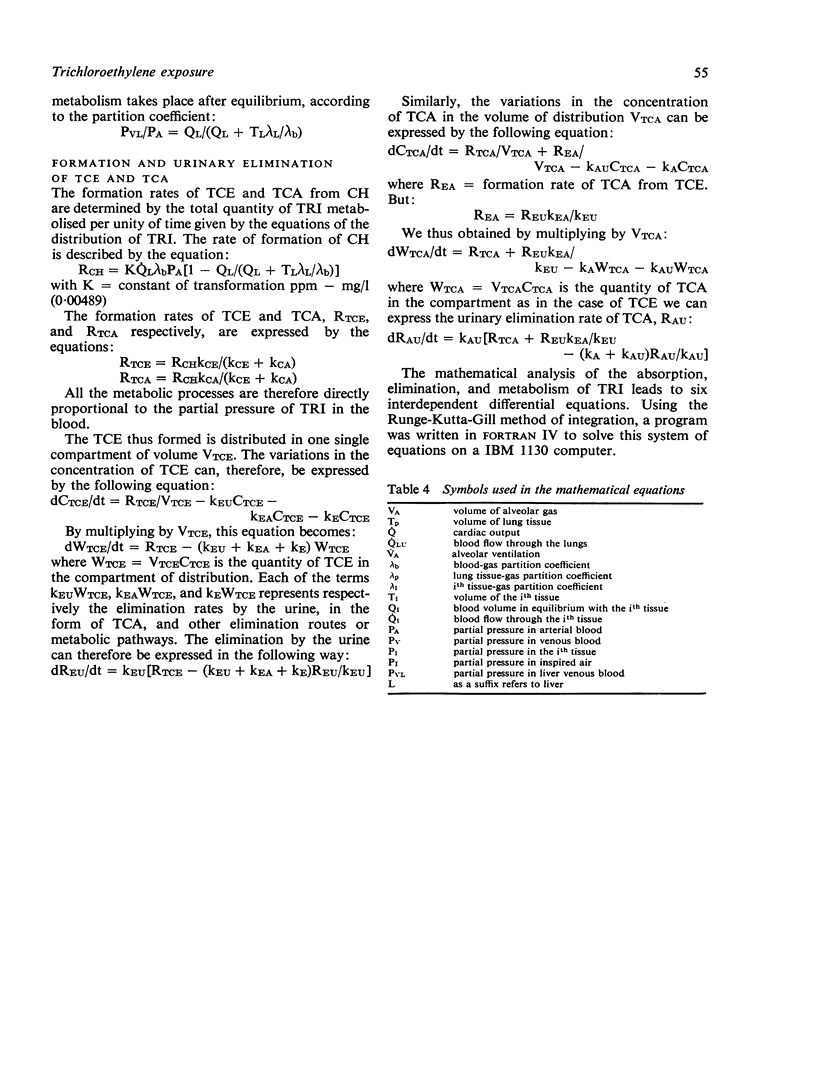
Selected References
These references are in PubMed. This may not be the complete list of references from this article.
- Byington K. H., Leibman K. C. Metabolism of trichloroethylene in liver microsomes. II. Identification of the reaction product as chloral hydrate. Mol Pharmacol. 1965 Nov;1(3):247–254. [PubMed] [Google Scholar]
- Cowles A. L., Borgstedt H. H., Gillies A. J. Tissue weights and rates of blood flow in man for the prediction of anesthetic uptake and distribution. Anesthesiology. 1971 Nov;35(5):523–526. doi: 10.1097/00000542-197111000-00013. [DOI] [PubMed] [Google Scholar]
- Ertle T., Henschler D., Müller G., Spassowski M. Metabolism of trichloroethylene in man. I. The significance of trichloroethanol in long-term exposure conditions. Arch Toxikol. 1972;29(3):171–188. doi: 10.1007/BF00315598. [DOI] [PubMed] [Google Scholar]
- Fiserova-Bergerova V., Vlach J., Singhal K. Simulation and prediciton of uptake, distribution, and exhalation of organic solvents. Br J Ind Med. 1974 Jan;31(1):45–52. doi: 10.1136/oem.31.1.45. [DOI] [PMC free article] [PubMed] [Google Scholar]
- Guberan E., Fernandez J. Control of industrial exposure to tetrachloroethylene by measuring alveolar concentrations: theoretical approach using a mathematical model. Br J Ind Med. 1974 Apr;31(2):159–167. doi: 10.1136/oem.31.2.159. [DOI] [PMC free article] [PubMed] [Google Scholar]
- Ikeda M., Imanura T. Biological half-life of trichloroethylene and tetrachloroethylene in human subjects. Int Arch Arbeitsmed. 1973 Jul 10;31(3):209–224. doi: 10.1007/BF00539241. [DOI] [PubMed] [Google Scholar]
- KETY S. S. The theory and applications of the exchange of inert gas at the lungs and tissues. Pharmacol Rev. 1951 Mar;3(1):1–41. [PubMed] [Google Scholar]
- Kimmerle G., Eben A. Metabolism, excretion and toxicology of trichloroethylene after inhalation. 2. Experimental human exposure. Arch Toxikol. 1973;30(2):127–138. doi: 10.1007/BF02425930. [DOI] [PubMed] [Google Scholar]
- Leibman K. C. Metabolism of trichloroethylene in liver microsomes. I. Characteristics of the reaction. Mol Pharmacol. 1965 Nov;1(3):239–246. [PubMed] [Google Scholar]
- MAPLESON W. W. An electric analogue for uptake and exchange of inert gases and other agents. J Appl Physiol. 1963 Jan;18:197–204. doi: 10.1152/jappl.1963.18.1.197. [DOI] [PubMed] [Google Scholar]
- MARSHALL E. K., Jr, OWENS A. H., Jr Absorption, excretion and metabolic fate of chloral hydrate and trichloroethanol. Bull Johns Hopkins Hosp. 1954 Jul;95(1):1–18. [PubMed] [Google Scholar]
- Müller G., Spassovski M., Henschler D. Metabolism of trichloroethylene in man. II. Pharmacokinetics of metabolites. Arch Toxicol. 1974;32(4):283–295. doi: 10.1007/BF00330110. [DOI] [PubMed] [Google Scholar]
- Müller G., Spassovski M., Henschler D. Trichloroethylene exposure and trichloroethylene metabolites in urine and blood. Arch Toxikol. 1972;29(4):335–340. doi: 10.1007/BF00326650. [DOI] [PubMed] [Google Scholar]
- Müller G., Spassowski M., Henschler D. Metabolism of trichloroethylene in man. III. Interaction of trichloroethylene and ethanol. Arch Toxicol. 1975;33(3):173–189. doi: 10.1007/BF00311271. [DOI] [PubMed] [Google Scholar]
- Nomiyama K., Nomiyama H. Metabolism of trichloroethylene in human. Sex difference in urinary excretion of trichloroacetic acid and trichloroethanol. Int Arch Arbeitsmed. 1971;28(1):37–48. [PubMed] [Google Scholar]
- OWENS A. H., Jr, MARSHALL E. K., Jr A comparison of the metabolism of ethanol and trichloroethanol. Bull Johns Hopkins Hosp. 1955 Dec;97(6):395–404. [PubMed] [Google Scholar]
- Ogata M., Takatsuka Y., Tomokuni K. Excretion of organic chlorine compounds in the urine of persons exposed to vapours of trichloroethylene and tetrachloroethylene. Br J Ind Med. 1971 Oct;28(4):386–391. doi: 10.1136/oem.28.4.386. [DOI] [PMC free article] [PubMed] [Google Scholar]
- SOUCEK B., VLACHOVA D. Excretion of trichloroethylene metabolites in human urine. Br J Ind Med. 1960 Jan;17:60–64. doi: 10.1136/oem.17.1.60. [DOI] [PMC free article] [PubMed] [Google Scholar]
- Sellers E. M., Koch-Weser J. Kinetics and clinical importance of displacement of warfarin from albumin by acidic drugs. Ann N Y Acad Sci. 1971 Jul 6;179:213–225. doi: 10.1111/j.1749-6632.1971.tb46901.x. [DOI] [PubMed] [Google Scholar]
- Steward A., Allott P. R., Cowles A. L., Mapleson W. W. Solubility coefficients for inhaled anaesthetics for water, oil and biological media. Br J Anaesth. 1973 Mar;45(3):282–293. doi: 10.1093/bja/45.3.282. [DOI] [PubMed] [Google Scholar]
- Stewart R. D., Hake C. L., Peterson J. E. Use of breath analysis to monitor trichloroethylene exposures. Arch Environ Health. 1974 Jul;29(1):6–13. doi: 10.1080/00039896.1974.10666518. [DOI] [PubMed] [Google Scholar]


